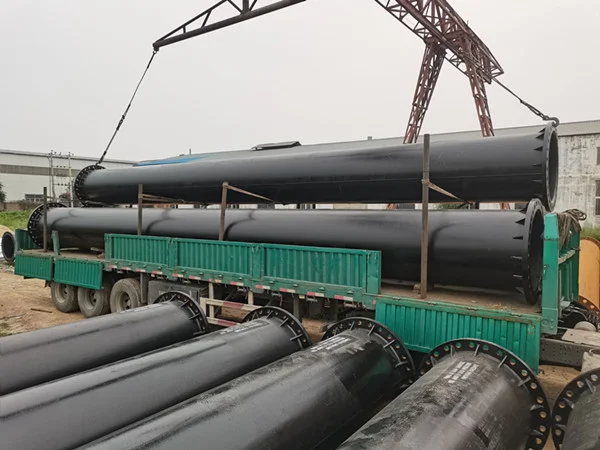Three production processes of welded pipe
Steel pipes are generally divided into seamless steel pipes and welded steel pipes according to production methods. This time we mainly introduce welded steel pipes, that is, seam steel pipes. The production of pipe billets (steel plates and steel strips) is bent and rolled into the required cross section by various forming methods. The pipe tube with surface shape and size is then welded by different welding methods to obtain steel pipes. Compared with seamless steel pipe welded pipes, it has high product accuracy, especially high wall thickness accuracy, simple main equipment, and small floor space. Continuous operation in production and flexible production characteristics, welded pipes should be divided from the production process, and divided into three types: spiral submerged arc welded pipe, straight seam double-sided submerged arc welded pipe, and resistance welded pipe.

1. The production process of spiral steel pipe is roughly as follows:
The raw materials of spiral steel pipe are strip coil, welding wire and flux. Before forming, the strip undergoes flattening, edge trimming, edge planing, surface cleaning and conveying and pre-flanging treatment. The weld gap control device is used to ensure that the weld gap meets the welding requirements. It is required to strictly control the pipe diameter, the amount of misalignment and the weld gap. After cutting into a single steel pipe, the first three of each batch of steel pipes must undergo a strict first inspection system to check the mechanical properties, chemical composition, fusion state and surface of the weld. Quality and non-destructive inspections to ensure that the pipe-making process is qualified can it be officially put into production.
2. LSAW pipe:
Generally speaking, LSAW pipe is made of steel plate as raw material. After different forming processes, double-sided submerged arc welding and post-weld diameter expansion are adopted to form welded pipe. The forming method of LSAW pipe is UO (UOE). , RB (RBE), JCO (JCOE), etc.
UOE longitudinal submerged arc welded pipe forming process:
UOE longitudinal submerged arc welded steel pipe forming process mainly has three forming processes: steel plate pre-bending, U forming and O forming. Each process uses a special forming press to complete the edge pre-bending, U forming and O forming of the steel plate in sequence. Three processes, the steel plate is deformed into a round tube, the JCOE LSAW pipe forming process: After multiple stamping on the JC0 forming machine, first half of the steel plate is pressed into a J shape, and then the other half of the steel plate is pressed into a J Shape, forming a C-shape, press from the middle to form an open "0"-shaped tube.
Comparison of JCO and UO molding methods:
JCO forming is progressive pressure forming, which changes the forming process of steel pipe from two steps of UO forming to multiple steps. During the forming process, the steel plate deforms evenly, the residual stress is small, and the surface does not produce scratches. There is greater flexibility in the size range of the wall thickness, which can produce both large-volume products and small-volume products. It can produce large-diameter high-strength thick-walled steel pipes and small-diameter large-walled steel pipes, especially In the production of high-quality thick-walled pipes, especially in the production of small and medium-caliber thick-walled pipes, it has advantages that other processes can’t match, and can meet more requirements of users for steel pipe specifications. UO forming adopts U and O double pressure forming. Its characteristics are It has large capacity and high output. Generally, the annual output can reach 300,000 to 1 million tons, which is suitable for mass production of a single specification.
3. Straight seam high frequency welded pipe
Straight seam high frequency welded pipe (ERW) is formed by forming a hot rolled coil through a forming machine, using the skin effect and proximity effect of high frequency current to heat and melt the edge of the pipe blank, and pressure welding is performed under the action of a squeeze roller.






